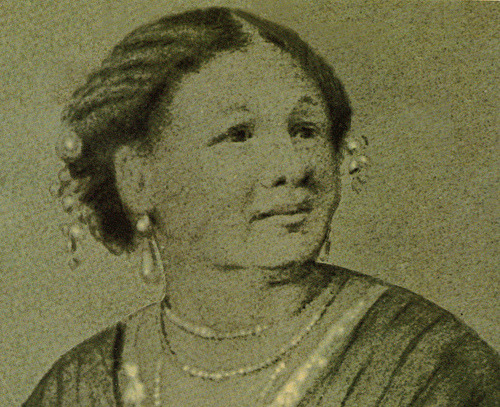womenwhokickass:Mother Mary Seacole: Why she kicks assShe was a Jamaican nurse best known for her in
womenwhokickass:Mother Mary Seacole: Why she kicks assShe was a Jamaican nurse best known for her involvement in the Crimean War, who set up and operated boarding houses in Panama and the Crimea to assist in her desire to treat the sick. She was taught herbal remedies and folk medicine by her mother, who kept a boarding house for disabled European soldiers and sailors.Seacole was honoured in her lifetime, alongside Florence Nightingale, but after her death she was forgotten for almost a century. Today, she is noted for her bravery and medical skills and as “a woman who succeeded despite the racial prejudice of influential sections of Victorian society”.In Gorgona, Seacole established a women-only hotel and continued to treat the sick.Her autobiography, Wonderful Adventures of Mrs. Seacole in Many Lands (1857), is a vivid account of her experiences, one of the earliest autobiographies of a mixed-race woman and the first autobiography written by a black woman in Britain.She applied to the War Office and asked to be sent as an army assistant to the Crimea, but was refused, mainly because of prejudice against women’s involvement in medicine at the time. The British Government later decided to permit women to travel to the affected area, but she was not included in the party of 38 nurses chosen by Florence Nightingale. Instead, she borrowed money to make the 4,000-mile (about 6500 km) journey by herself. She distinguished herself treating battlefield wounded, often nursing wounded soldiers from both sides while under fire. (At a meeting with Florence Nightingale, her help was refused.)The Special Correspondent of The Times newspaper wrote approvingly of her work:”…Mrs. Seacole…doctors and cures all manner of men with extraordinary success. She is always in attendance near the battle-field to aid the wounded, and has earned many a poor fellow’s blessings.”When the conflict ended in 1856 she found herself stranded and almost destitute, and was only saved from adversity by friends from the Crimean War who organised a benefit concert.By 1870, she was back in London, drawn back by the prospect of rendering medical assistance in the Franco-Prussian War. It seems likely that she approached Sir Harry Verney (the husband of Florence Nightingale’s sister) who was closely involved in the British National Society for the Relief of the Sick and Wounded. It was at this time Nightingale wrote her letter to Verney insinuating that Seacole had kept a “bad house” in Crimea, and was responsible for “much drunkenness and improper conduct”.She was posthumously awarded the Jamaican Order of Merit in 1991. The headquarters of the Jamaican General Trained Nurses’ Association was christened “Mary Seacole House” in 1954, followed quickly by the naming of a hall of residence of the University of the West Indies in Mona, Jamaica. A ward at Kingston Public Hospital was also named in her memory. She was voted into first place in an online poll of 100 Great Black Britons in 2004. The portrait identified as Seacole in 2005 was used for one of ten first-class stamps showing important Britons, to commemorate the 150th anniversary of the National Portrait Gallery.British buildings and organisations now commemorate her by name. One of the first was the Mary Seacole Centre for Nursing Practice at Thames Valley University, which created the NHS Specialist Library for Ethnicity and Health, a web-based collection of research-based evidence and good practice information relating to the health needs of minority ethnic groups, and other resources relevant to multi-cultural health care.An annual prize to recognise and develop leadership in nurses, midwives and health visitors in the National Health Service was named Seacole, to “acknowledge her achievements”. -- source link
Tumblr Blog : womenwhokickass.tumblr.com
#mary seacole#medical#crimean war#19th century#badassery#awesome people#nurse#history#jamaica
